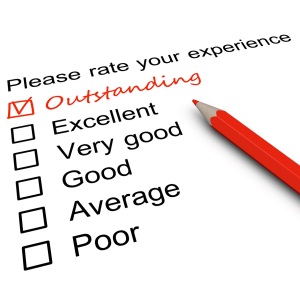 Let me start by saying that I know that not everyone who graduates from law school aspires to be a partner in a big law firm. Or a small law firm. Or any law firm. I’m not suggesting it should be everyone’s or anyone’s goal. Many who make it a goal, and achieve it, come to believe it is overrated. I strongly feel from what I hear and read that partnership has become far less important to many than it was when I graduated (1993), and I doubt it was as important to lawyers of my generation compared with earlier generations. I recognize, then, that this post may not be equally interesting to everyone.
Let me start by saying that I know that not everyone who graduates from law school aspires to be a partner in a big law firm. Or a small law firm. Or any law firm. I’m not suggesting it should be everyone’s or anyone’s goal. Many who make it a goal, and achieve it, come to believe it is overrated. I strongly feel from what I hear and read that partnership has become far less important to many than it was when I graduated (1993), and I doubt it was as important to lawyers of my generation compared with earlier generations. I recognize, then, that this post may not be equally interesting to everyone.
Now that I’ve cleared my throat and caused most readers to change the channel, what I want to say is that, if you do aspire to partnership there are far worse words to live by than J. Daniel Hull’s self-described “World Famous Bad-Ass, Annoying and Infuriatingly Correct 12 Rules of Customer Service.”
I can guess what you’re thinking. Hull’s damn Rules are meant to inform the ways attorneys provide service to their clients, not how associates should treat partners. If we adhere strictly to labels, that is true. But I want to argue that being a junior lawyer who works for, takes direction (and compensation) from and attempts to please senior lawyers is very similar to the experience of any lawyer who works for, takes direction (and compensation) from and attempts to please their customers, i.e., clients. Even if one never aspires to be a partner, then, being a good associate can still be terrific training for how to be a good customer service-oriented lawyer. And, Hull’s rules are a damn good start.
Let’s look at them.
1.Represent only clients you like.
I previously said in another post that, at first blush, this rule seems to suggest we all have the luxury to cherry pick clients. Clearly, most of us don’t have this luxury. Similarly, associates rarely have complete control over who assigns them work. On the other hand, just as lawyers can work over the long-term to shape their practices away from clients they don’t like, talented associates can try to shape their position within a firm. While it might never be possible to completely avoid working for a complete asshole, it should be possible to position yourself to work more often with senior lawyers you respect and like. If there’s more than one complete asshole, then you probably don’t want to be a partner at that firm.
2.The client is the main event.
If you get to work and interact directly with a client, that client is the main event. If not, then the partner who assigned you the work is the main event. If you wouldn’t think of filing or giving a client a document that contains typos or is otherwise sloppy (you wouldn’t, would you?), don’t think you’re going to gain traction with any partner who receives a crappy, typo-ridden document. “Gaining traction” is fancy law firm speak for “having a future.” If nothing else, have your assistant proof read everything before you give it to anybody.
3.Make sure everyone in your firm knows the client is the main event.
4.Deliver legal work that changes the way clients think about lawyers.
Here I suggest you to strive to deliver work that changes the way many partners think about many associates. I witnessed first hand during my career the erosion of how many partners regard associates. I trace it to the point in time when a handful of very lucrative Silicon Valley law firms decided to give the historically high paying New York law firms a run for their money in terms of associate compensation. This seemed to coincide roughly with the point at which late Gen X and early Gen Y law students started graduating. The buzzwords I heard a lot around that time (and I wasn’t yet a partner) was some variation of “undeserved sense of entitlement.”
The good news for associates is that many partners are now so underwhelmed with the commitment of more recent law school graduates that it’s actually not that hard to stand out. In my crude, empirically unsound and untested estimation, a Gen Y associate who puts in the same effort as earlier generations of associates could be a rock star at some law firms. On the other hand, I recognize that many Gen Y lawyers have a different sense of priorities than earlier generations, which I suspect is why partnership is not the brass ring it once was.
5.Over-communicate: bombard, copy and confirm.
Like most clients, most partners like to be kept informed. If you find yourself working with someone who has limited tolerance for minutiae (and they’re out there) be sensitive to that and adjust accordingly.
6.When you work, you are marketing.
This is true whenever you do anything professionally, whether it’s for a client or a partner.
Know the partner. Take an interest in her practice and her clients. Think: how can I make her job/life/career easier. Take ownership of cases, deals or assignments and try to think how you can contribute more to the big picture. Don’t be afraid to make suggestions, but be careful not to do things unilaterally that might run contrary to the lead lawyer’s strategy. When in doubt, ask.
8.Think like the client–help control costs.
Think like the partner who is attempting to think like the client. Part of this is understanding and appreciating where you fit in. Ideally, you bring value to the client since it theoretically costs less for you to spend your time doing a task. This should also have a three-fold benefit to the partner and the law firm. On the one hand, it should free up the partner to spend less time doing more routine tasks and more time thinking strategically and doing more sophisticated tasks requiring experience, training and judgment for which clients are willing to pay higher fees. It should also free up the partner to spend more time marketing and bringing in new business which helps the firm grow. Finally, if leveraged properly, associates are profitable. While partners should not shrink from the responsibility of training, and cutting associate time from the bill is often appropriate, the more the above runs like a well-oiled machine the better for everyone involved.
I was going to say, “That’s why the firm bought you that iPhone 5,” but that’s not really what I mean. Perhaps it’s better to say that many clients expect their most trusted advisors to be there when they’re needed, without regard to day of the week or hour of the day. Associates that make it clear they will do what they can to recognize and meet this expectation will tend to be viewed as more valuable than associates who do not. I will admit that, as an associate, I jealously guarded my time away from work. As I started developing my own clients, however, I came to realize that, in doing this, I was just putting off the inevitable, since clients really do expect their trusted advisors to be available 24/7. It’s just part of the job which, as we know, is not for everybody.
10.Be accurate, thorough and timely–but not perfect.
It’s okay to make mistakes. But own mistakes when you make them. Resist the temptation to conceal mistakes or shift blame to others. Clients see right through this and so do partners.
11.Treat each co-worker like he or she is your best client.
Being graded on citizenship doesn’t stop when you leave grade school. Whether it’s made explicit or not, one thing partners consider when making advancement decisions is how well you fit in. Whether the office has 3 or 130 people, the ability to work well with others is important. If you’re rude to other lawyers, disrespectful or downright mean to staff, it can hinder your advancement. Many firms, including my own, pride themselves on having “very few sharp elbows.” Regardless how talented you may be, if you have “sharp elbows,” or an outsized sense of your own importance, or you’re just a jerk, it can make it hard for you to gain traction.
12.Have fun.
If you’re not having fun as an associate, it’s unlikely the practice of law is going to become fun if/when you become a partner, and your responsibilities extend far beyond doing great work and billing lots of hours, to include marketing and management responsibilities. If you’re not having any fun, maybe it’s time to think about doing something else.
So, if partnership is what you’re after, try applying Dan Hull’s “annoying and infuriatingly correct” Rules to the service you provide.









